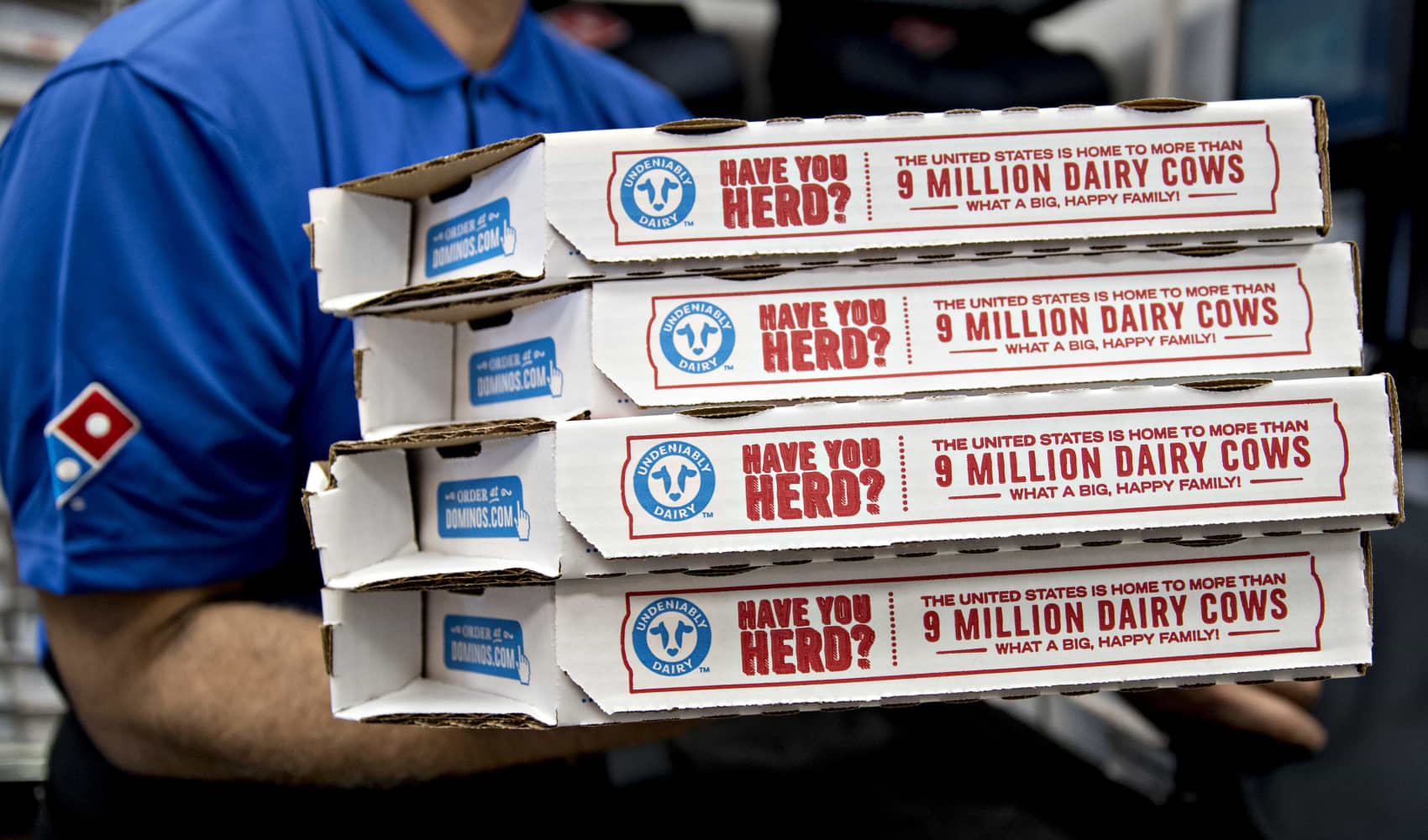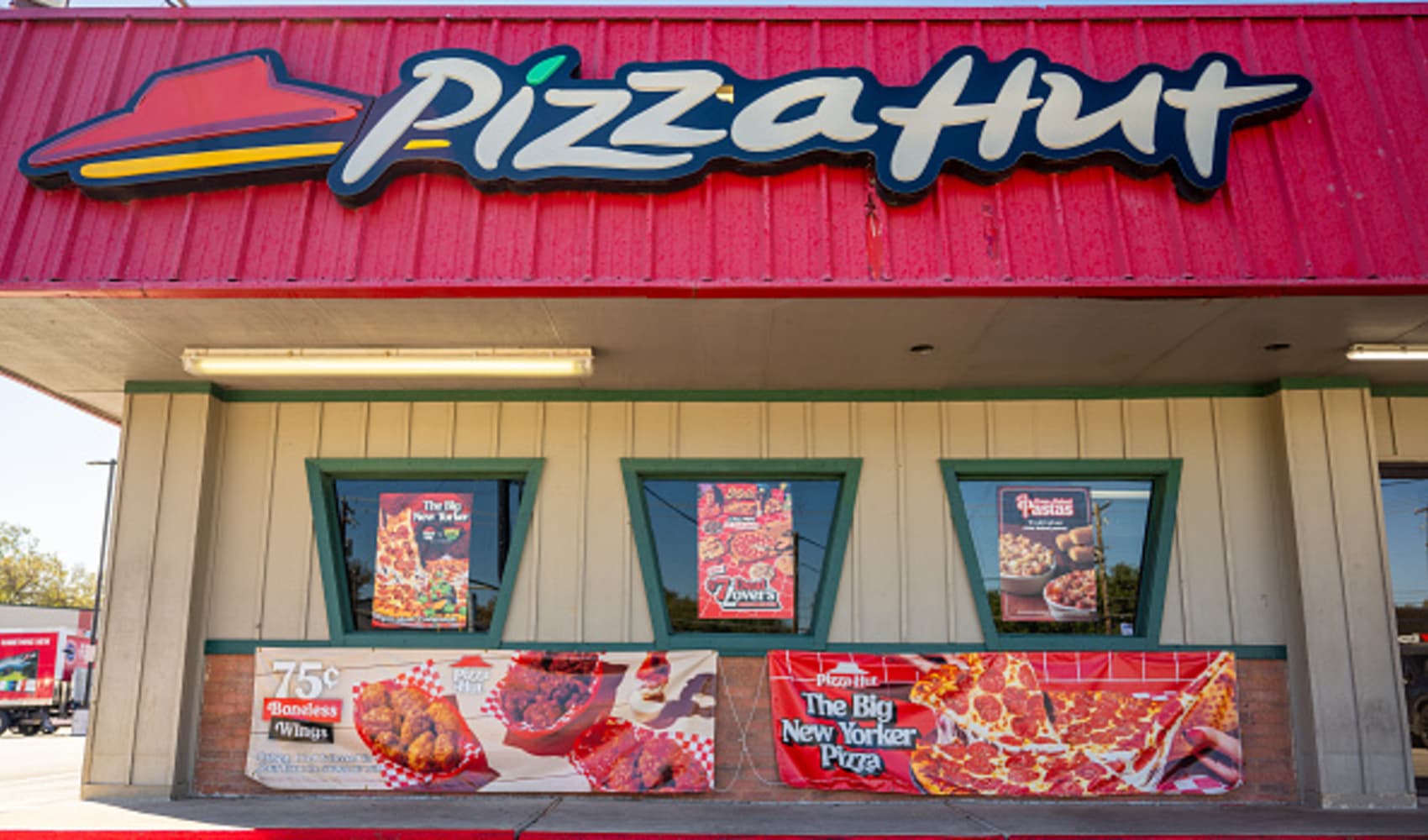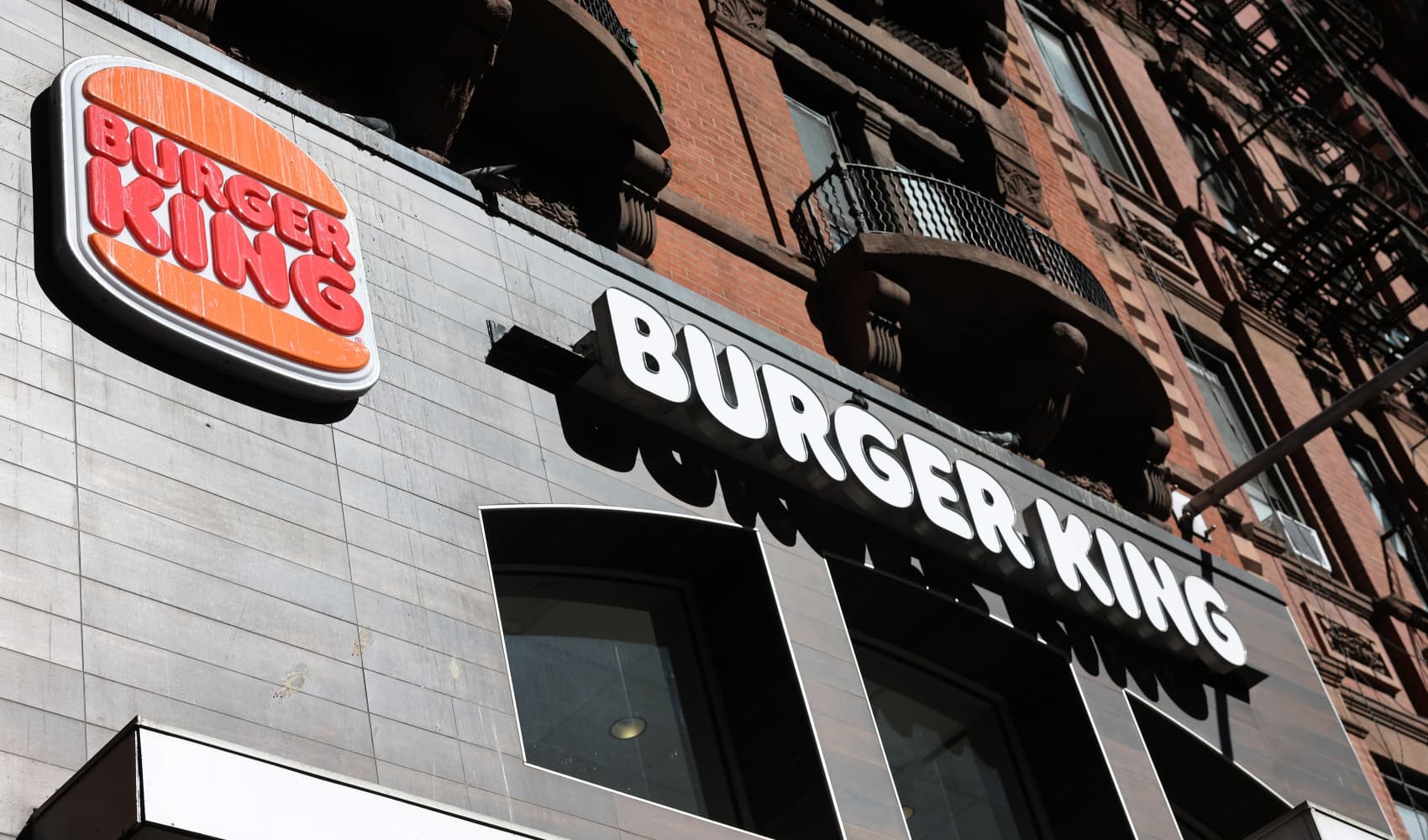Domino's CEO Explains Earnings After Mixed Quarter
Domino's CEO on Market Share Win: Decoding a Mixed Quarter
Introduction: Slicing Through the Numbers
Domino's Pizza, a name synonymous with Friday night pizza cravings and quick weeknight dinners, recently reported its first-quarter earnings. The results? Well, let's just say they weren't quite as cheesy as a fully loaded pepperoni pizza. The report card showed a mixed bag, leaving some investors scratching their heads. But fear not, pizza lovers! Domino's CEO, Russell Weiner, sat down with CNBC's Jim Cramer to unpack the numbers and share his optimistic outlook. So, grab a slice and let's dive into what's happening at the world's largest pizza company!
Domino's CEO Weighs in on CNBC
In a recent interview, Domino’s Pizza CEO Russell Weiner provided insights into the company's performance during its most recent quarter. Despite facing some challenges, Weiner expressed confidence in the company's ability to navigate the current market conditions and achieve its goals for the remainder of the year.
“In the short term, look, we had a quarter, we missed a little bit, but…we won on market share. We grew market share,” Weiner said. “We’ve grown market share almost a point pretty much every year…that I’ve been here for, 16 years.”
Market Share: The Secret Sauce
So, what’s this talk about market share? Think of the pizza market as a giant pie. Every pizza company, from your local mom-and-pop shop to the big chains, is trying to grab a bigger slice. Even if Domino's didn't hit its earnings target perfectly, Weiner emphasized that they actually increased their share of that giant pizza pie. That's a big deal! It means more people are choosing Domino's over the competition. How do they do it?
Long-Term Strategy Pays Off
Weiner highlighted that Domino's had been consistently growing its market share for the past 16 years. It's like investing in a savings account – small, consistent gains over time can add up to a significant amount. This consistent growth suggests Domino's isn't just relying on short-term fads but building a sustainable advantage.
Understanding the "Mixed Quarter"
Okay, let's address the elephant in the room – the "mixed quarter." What exactly does that mean? Well, it could mean a few things. Maybe sales weren't as high as expected in some regions. Perhaps costs were higher than anticipated due to inflation or supply chain issues. Or maybe a combination of factors contributed to the overall result. It’s important to remember that even the biggest companies have their ups and downs. The real question is, how do they respond?
Beyond the Numbers: Weiner's Optimism
Despite the mixed results, Weiner’s optimism shines through. Why is he so confident? There are likely several reasons:
Innovation is Key
Domino’s has a history of innovation. Remember the pizza tracker? That was a game-changer! They're constantly experimenting with new technologies and menu items to stay ahead of the curve. Think about new crust options, innovative topping combinations, and even drone delivery – Domino's isn't afraid to push the boundaries.
Focus on Customer Experience
A happy customer is a repeat customer. Domino's invests heavily in making the ordering process as smooth and convenient as possible. Whether it's online ordering, mobile apps, or loyalty programs, they're focused on making it easy for you to get your pizza fix. Have you tried their carside delivery? It's pure genius!
Inflation's Impact on the Pizza Industry
Let's face it, inflation is impacting everything, and pizza is no exception. From the cost of cheese and flour to the price of gas for delivery drivers, everything is getting more expensive. This puts pressure on Domino's to manage costs effectively while still providing a quality product at a competitive price. It's a delicate balancing act.
Navigating Supply Chain Challenges
Remember those supply chain disruptions we heard so much about? They're still around! Getting ingredients and supplies on time can be a challenge, especially with global events causing uncertainty. Domino's needs to have strong relationships with its suppliers and be prepared to adapt quickly to changing circumstances. Think of it like a well-oiled pizza-making machine – every part needs to work seamlessly.
The Power of Loyalty Programs
Domino's knows that rewarding loyal customers is a smart business strategy. Their loyalty programs offer discounts, free pizzas, and other perks to keep people coming back for more. It's like getting a free topping on your pizza – who can resist that?
Tech-Savvy Pizza: How Technology Drives Domino's
Domino's isn't just a pizza company; it's a tech company that happens to sell pizza. Their online ordering system, mobile app, and pizza tracker are all examples of how they use technology to enhance the customer experience. They're even experimenting with artificial intelligence and automation to streamline operations. Is your pizza being made by a robot? Maybe not yet, but the future is closer than you think!
Franchise Model: A Recipe for Growth
Domino's operates primarily on a franchise model, which means that most of their stores are owned and operated by independent franchisees. This allows them to expand rapidly without taking on all the financial risk themselves. It's like a team of entrepreneurs all working together to build the Domino's brand. Plus, local ownership often leads to better customer service and a deeper understanding of local tastes.
Competition in the Pizza Wars
The pizza industry is fiercely competitive. Domino's faces competition from other large chains like Pizza Hut and Papa John's, as well as countless independent pizzerias. To stay ahead, they need to constantly innovate and offer a superior product and experience. It's a constant battle for pizza supremacy!
The Future of Domino's: What to Expect
So, what can we expect from Domino's in the future? More innovation, more focus on customer experience, and more efforts to manage costs and navigate the challenges of the current economic environment. They'll likely continue to experiment with new technologies and menu items to stay ahead of the competition. And, of course, they'll continue to strive to deliver hot, delicious pizza to your door, no matter what.
Global Expansion: Taking Pizza Worldwide
Domino's is a global brand, with stores in countries all over the world. They're constantly looking for opportunities to expand into new markets and bring their pizza to new audiences. From adapting their menu to local tastes to navigating cultural differences, expanding globally presents unique challenges and opportunities. Imagine Domino's pizza in every corner of the world!
The Domino's Difference: What Sets Them Apart?
What makes Domino's stand out from the crowd? Is it their commitment to innovation? Their focus on customer experience? Or perhaps their consistent quality and value? It's likely a combination of all these factors. They've built a strong brand that resonates with customers around the world, and they're constantly working to improve and stay ahead of the competition.
Conclusion: The Big Picture
Despite a mixed quarter, Domino's CEO Russell Weiner remains optimistic. His confidence stems from the company's consistent market share growth, its focus on innovation and customer experience, and its strong franchise model. While challenges like inflation and supply chain disruptions remain, Domino's is well-positioned to navigate these hurdles and continue to thrive in the competitive pizza industry. So, the next time you're craving a pizza, remember that there's a lot more going on behind the scenes than just cheese and pepperoni!
Frequently Asked Questions
- Why is market share important for Domino's?
Market share represents the percentage of the total pizza market that Domino's controls. Increasing market share means they are attracting more customers than their competitors, leading to greater revenue and profitability in the long run.
- How is Domino's addressing inflation?
Domino's is likely employing a variety of strategies, including negotiating with suppliers, optimizing their supply chain, and potentially adjusting menu prices to offset rising costs. They may also be focusing on value offerings to attract budget-conscious customers.
- What are some examples of Domino's innovations?
Domino's has a long history of innovation, including the pizza tracker, online ordering, mobile app, carside delivery, and experimenting with drone delivery. They're constantly looking for new ways to improve the customer experience and streamline operations.
- How does the franchise model benefit Domino's?
The franchise model allows Domino's to expand rapidly with less capital investment, as franchisees bear the costs of opening and operating individual stores. It also benefits from the local knowledge and entrepreneurial spirit of its franchisees.
- What are Domino's plans for future growth?
Domino's likely plans to continue expanding its global footprint, investing in technology and innovation, and focusing on customer experience. They may also be exploring new menu items and delivery options to appeal to a wider range of customers.




